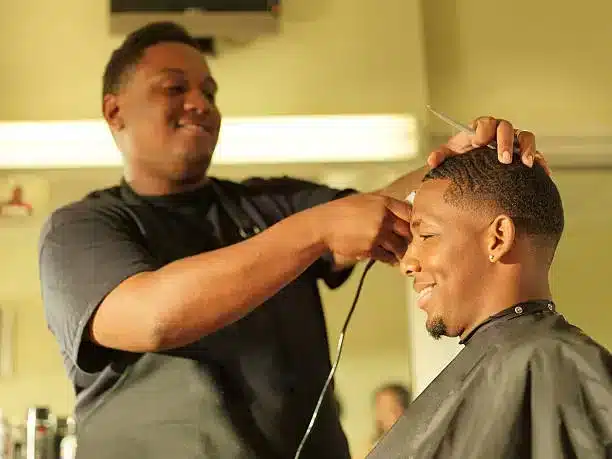Additionally, since trims normally remove an inch or less of hair, the subsequent growth will be effectively cancelled out. Remember that the frequency we previously advised is for hair that is long to medium-length.
Your new growth is more visible the shorter your hair is.
Short haircuts easily become overgrown, which might change the general form of your cut. You will need to get your hair cut more frequently if it is short (chin-length or shorter), such as every three to four weeks.
To Grow It Out
While it may be tempting to avoid haircuts when growing your hair out, doing so may make it more difficult to achieve your desired length. Health-related trims are less common because it’s more important to treat harm than to keep the same length.
Your hair will remain healthy as it grows in this manner.
Therefore, if you want your hair to grow longer, trim it every eight to twelve weeks. If your hair is healthy and you prevent heat, chemical, and mechanical damage, you can trim your hair less frequently. However, you shouldn’t skip a trim for longer than 16 weeks.
Is Hair Healthier After Cutting?
You’ll undoubtedly notice that your hair feels and looks great after a thorough haircut. That’s because after a haircut, your hair is considerably healthier. Your hair’s very ends are taken off during haircuts.
Your hair’s ends are also the oldest part of it, making them far more fragile. The ends of your hair start to separate as they become damaged.
Additionally, they grow tough, jagged cuticles that can tangle and knot when they come into contact with one another.
Since your hair can’t retain moisture, you’ll also notice that it feels dry and stiff. Fortunately, haircuts help remove current damage and reduce the likelihood of more harm.
What Happens if You Don’t Cut Your Hair for a Year?
Even with a wholesome, organized haircare program, some damage is unavoidable. Your hair can be harmed by simple actions like washing, styling, and going outside. So if you skip trims for a year, you’ll undoubtedly notice a lot of breakage and split ends.
Your hair may appear more lifeless and struggle to maintain a style.
If you naturally have curly or wavy hair, you can probably notice a lot of knots. Additionally, the eventual trim will result in more hair loss the longer you go without a haircut. Therefore, throughout the year, get your hair cut for the greatest outcomes.
Can Cutting Your Hair Help It Grow?
There is a widespread misunderstanding that haircuts encourage faster hair growth. Your growth rate won’t be affected by hair cuts. However, it might make it simpler to let your hair grow out.
As you now understand, damage doesn’t just begin at the ends of your hair.
Your locks will also grow thinner and shorter as the breakdown progresses higher. Due to your progress being undone, it may be impossible to grow your hair out as a result.
The good news is that regular trims and haircuts maintain healthy hair ends. Additionally, all of your newly grown hair will stay on because it isn’t falling out.
How to Tell When You Need a Haircut
One of the easiest methods to assess how often you need a haircut is to pay attention to your hair. There are various signs that it’s time for a haircut from your hair. Do you wish to learn what they are? Here are some symptoms that you need a haircut.


Leave a Reply